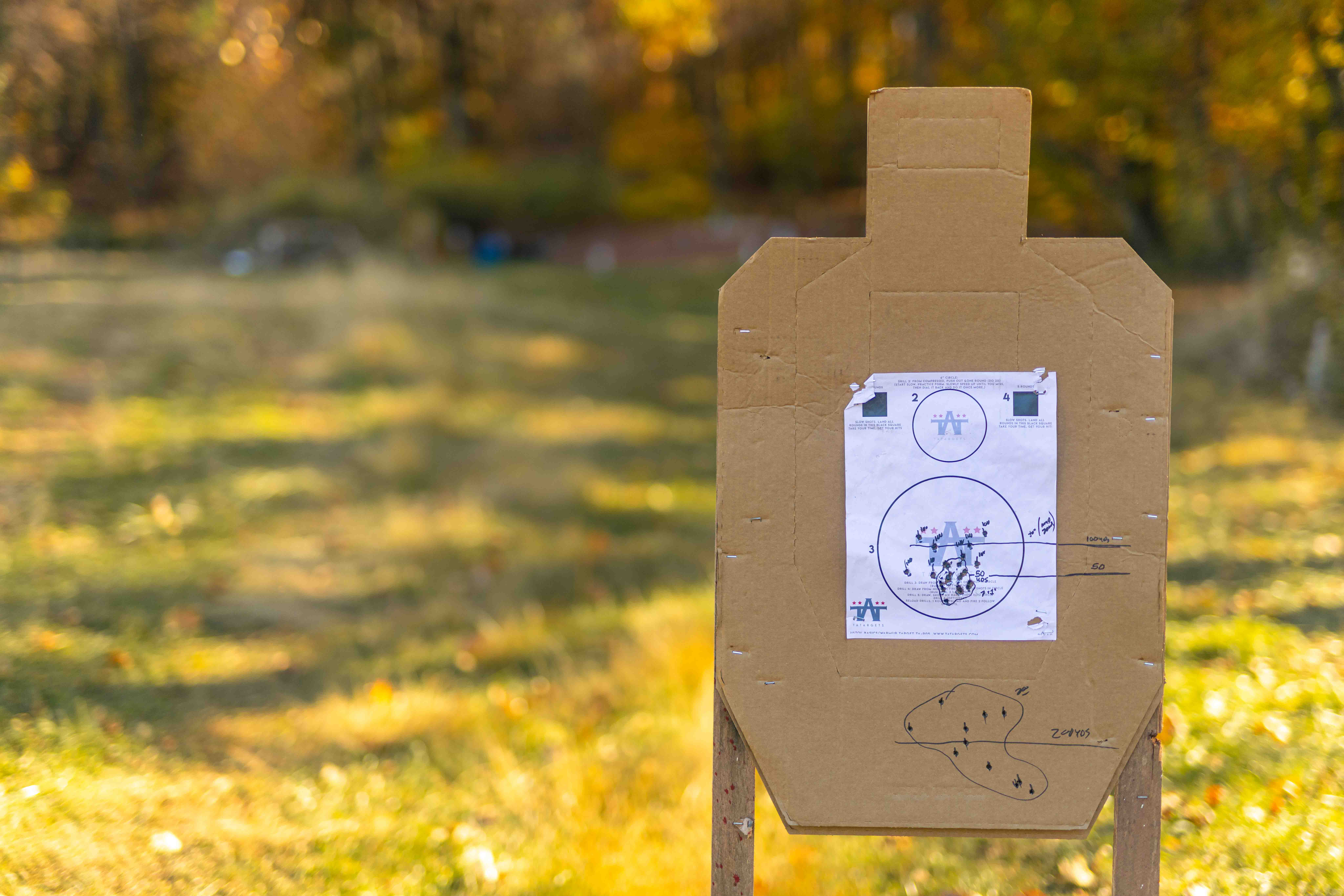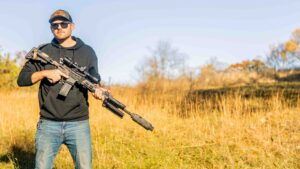Your Rifle’s Story (A Better Way to Zero Your Rifle)
- October 26, 2024
- By Jared Daub
Your Rifle’s Story
Your Rifle’s Story says a lot about YOU. I know that sounds crazy, but let me explain what I mean by that.
I learned this concept of my rifle’s story from a friend, Jared Segraves, Director of Training for Haley Strategic. He presented this idea that our rifle’s zero is not simply a task we perform once on the range, never to consider it again. I have always thought of myself as somewhat of a stickler when it came time to zero my rifles. But what I was presented with was very eye opening to me. The concept is fairly simple: My rifle and I are connected in a relationship. What I input into the rifle ultimately changes and affects the outcome I will see downrange. My patience and persistence during the zero process will also be reflected downrange on target.
A Zero is only a part of your rifles story
Most people land on a zero haphazardly. I will admit that for much of my life, I simply set up a target at 50 yards with my AR15, put 5-7 rounds on target, and if it was close it was “close enough”. As I began to shoot further and further distances, I began to realize the flaw of that thinking. When we press the trigger and send a round downrange, we are responsible for where it lands. That means understanding our rifle in such an intimate way that we can ALWAYS tell where that round will impact. This is mindset shift for many of us, especially hunters of larger game. No longer is the center of a deer’s vitals an “acceptable” level of accuracy and precision. We demand more from ourselves and our rifles with a new awakening. But to begin that process, we have to write our Rifle’s story.
The Process of Your Rifle’s Story
The process is simple. You are putting groups of 5-7 rounds on a target at varying distances while holding the SAME point of aim. In other words, you aim on the center of your target regardless of your distance. You then print, or write, the story of your rifle. I have begun to do this EVERY single range day before training. I often will start at 10 yards, then move to 25, then 50, 100, 150, and finally 200 yards. If you have access to a range with further distances, I would suggest you take advantage of them.
During this process, I ensure I have a stable rest, something consistent and realistic. For some rifles, I simply dig the magazine into the ground, build a good foundation, and execute the drills. For others, I’ll lock into a bipod, build an even more solid foundation, and execute to the highest level possible. I’m not saying I do this halfway for some guns, rather I’m saying I have higher expectations for certain rifle / optic combinations.
Analyzing the Data
When I go downrange, I analyze the data. What is it saying about my particular rifles performance? What does the story say? Further, what does it say about ME? The first thing I will check is: “Was my zero distance where I intended it to be?” Look, a “50 yard zero” that is 1/4″ low and 3/8″ to the right is NOT a 50 yard zero. That is not acceptable enough. If I see that data at my desired zero distance, I will adjust until it is perfect, until I am happy with it. THEN I will move onto printing the story.
If I find that I am not happy with my story, I will adjust the zero and do it again. Take a 50 yard zero with a standard 5.56 NATO AR15 and ammo around 2900FPS, for example. You should see your rounds impacting perfectly centered at 50 yards. At 100 yards, you will likely see your rounds impacting a bit high at 100. Then at 200 yards, your impacts should be slightly lower than at 50 yards. This is where the phrase “50/200” zero comes into the equation.
Another Rifles Story is not good enough for yours.

This is where I fell into the trap of believing the age-old theory that a 50/200 zero is best for my AR15. Best for what? Doesn’t the end use matter? What optic and ammo am I running? Am I shooting 25-30 yards, or am I shooting 600+ yards? These questions matter, the use case of your rifle drives your decision. Take my story for example: I had assumed this rifle had a 50 yard zero, yet my 50 yard impacts are low.
My 100 yard impacts are dead center on the target, and my 200 yard impacts are much lower than I desired. This is because of the use-case of this rifle. I want it dialed at 50 so even precise shots at 50 or 100 are close in impact. Additionally, I prefer the characteristics/holds of a 50 yard zero with THIS rifle at closer distances. For your use case, a rifle’s story printed with a 100 yard zero may be perfect.
Each rifle will be different.
No two rifles are the same, so we must reject the idea that one rifle’s story will match another or be correct for another rifle/shooter. I have learned that I must take each of my rifles out, print their story, then read their story. We need to make adjustments based upon an end result in mind. I no longer can just accept internet theory to determine what the story should read. Further, I have found that each of my rifles is slightly different. You will find the same thing to be true.
Your 10.3″ rifles story will be much different to your 16″. My 12.5″ and my 16″, with the same zero, will tell different stories. My hunting rifles will sometimes have different zero’s than my training rifles. I document all of this, and I have further gone down the trail of handloading my own precision ammo. This further allows my rifle’s story to be tailored directly to the desired outcomes.
When I do my part, I become part of the story.
Zeroing your rifle with this mindset will also teach you a lot about yourself. Can you call your hits as the shot breaks? Are you building a good foundation of stability? How is your breathing? Are you rushing the shot, breaking without regard for the sight picture? Jared taught me more about myself through that process than I learned about zeroing my rifle. Functionally, everything presented made sense. I already knew that being steady, having a goal to hit, and tracking performance was important.
What I didn’t realize is how the story of my rifle, and myself, is always evolving. Changing weather, circumstance, my demeanor, the glasses I wear, the sun in my eyes, will affect my ability to print the story well. And it is my responsibility to analyze myself through the process. Zeroing my rifle is now a training exercise just like everything else. In fact, I find that it soothes my mind, disciplines my actions.
I find that I take zeroing more seriously because now I have a method each time. No longer do I simply put a few rounds on target, say “close enough”, and move forward with my training. I am learning discipline and execution. Now when I show up to the range, I already know the story. I’m just confirming it, reminding myself, and becoming a part of my rifle. I have landed on the belief that no longer is there a “perfect zero” for all cases. There are only options, compromises. Ultimately, I need to understand my mission, my objective, and then tailer my Rifle’s Story to meet that demand. Your best zero is the one that achieves that objective and can be replicated consistently. That displays mastery.
Your rifle tells a story. What is it saying about YOU?








